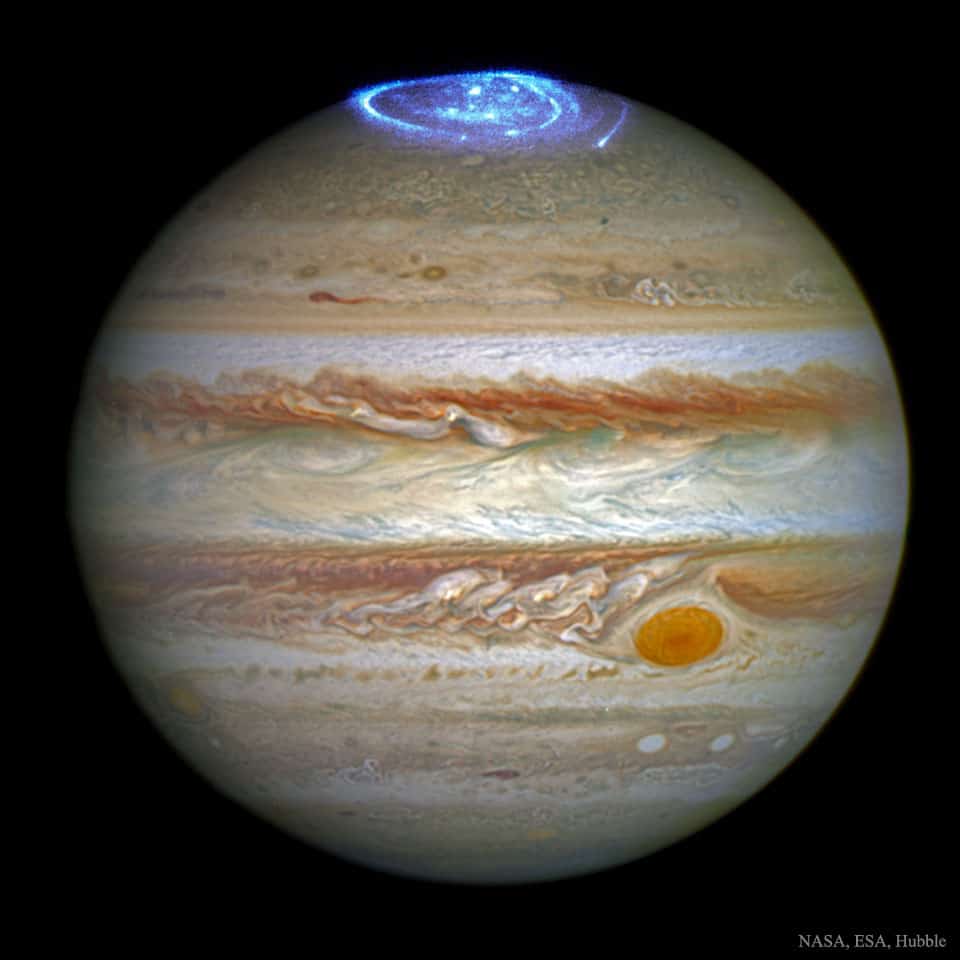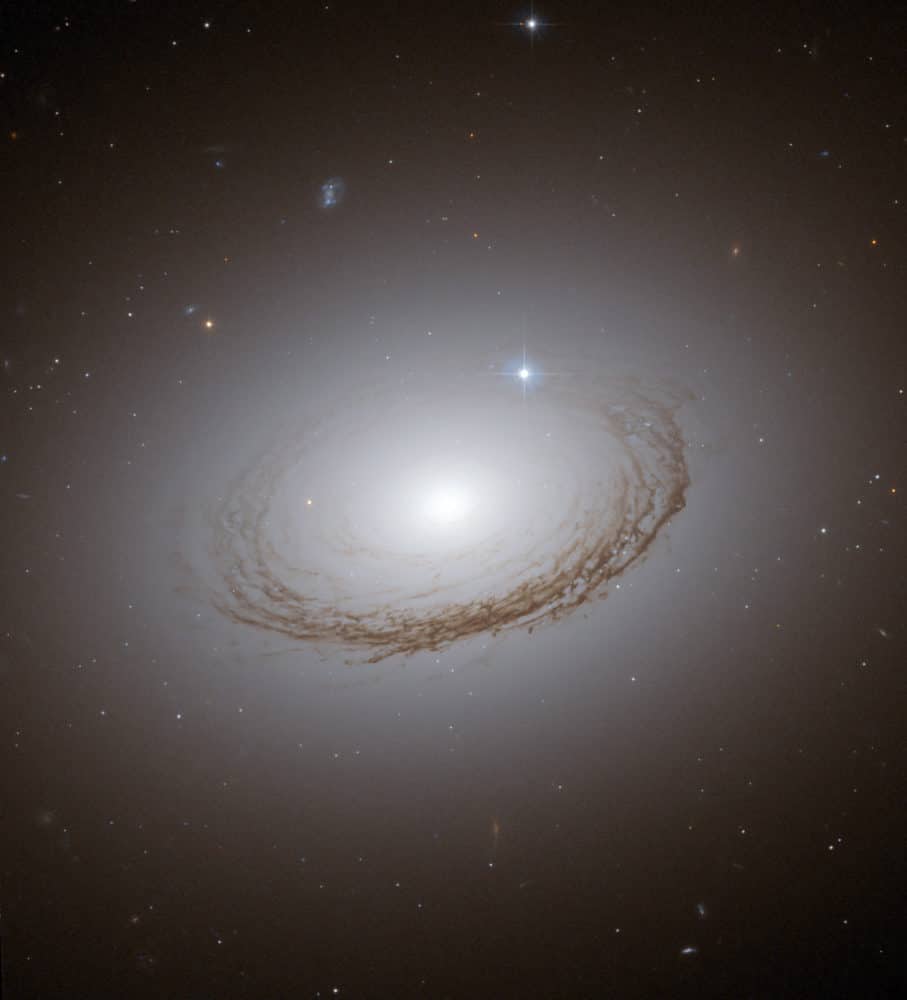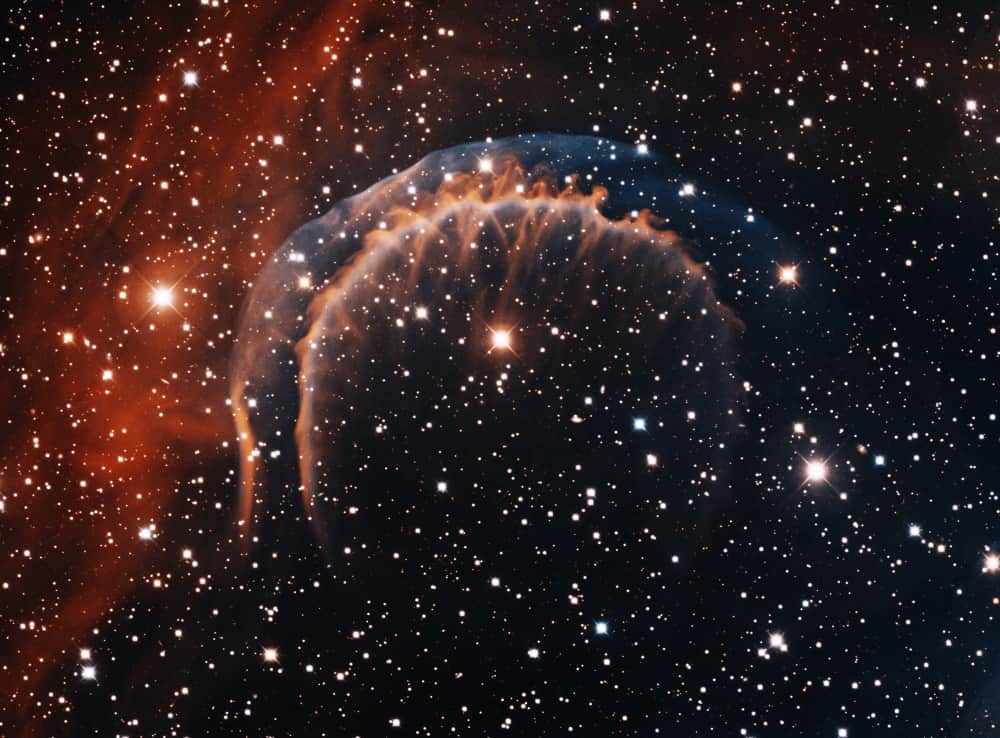Blog
Batá drumming is getting more and more popular these days. With a lot of the masters who transmitted the tradition of batá drumming having passed away, the one living master today is Román Diaz, born in Cuba, now residing in New York City.
more...Positive Vibrations quartet with Van Nixon, Onesmo Kibira, JD and mick laBriola. Performing 6-12-19 from 3-6pm to an open to the public event @ St Mary’s University Event Center Ballroom at 2540 Park Ave So Minneapolis for Ebenezer’s 101st Annual Ice Cream Social.
https://deafmn.com/event/ebenezers-101st-annual-ice-cream-social/
more...
Dust lanes seem to swirl around the core of Messier 96 in this colorful, detailed portrait of the center of a beautiful island universe. Of course M96 is a spiral galaxy, and counting the faint arms extending beyond the brighter central region, it spans 100 thousand light-years or so, making it about the size of our own Milky Way. M96, also known as NGC 3368, is known to be about 35 million light-years distant and a dominant member of the Leo I galaxy group. The featured image was taken by the Hubble Space Telescope. The reason for M96‘s asymmetry is unclear — it could have arisen from gravitational interactions with other Leo I group galaxies, but the lack of an intra-group diffuse glow seems to indicate few recent interactions. Galaxies far in the background can be found by examining the edges of the picture.
more...Armando Anthony “Chick” Corea (born June 12, 1941) is an American jazz pianist/electric keyboardist and composer.His compositions “Spain“, “500 Miles High“, “La Fiesta” and “Windows“, are considered jazz standards. As a member of Miles Davis‘s band in the late 1960s, he participated in the birth of jazz fusion. In the 1970s he formed the fusion band Return to Forever. With Herbie Hancock, McCoy Tyner, and Keith Jarrett, he has been described as one of the major jazz piano voices to emerge in the post-John Coltrane era.
Corea continued to pursue other collaborations and to explore musical styles throughout the 1980s and 1990s. He is also known for promoting and fundraising for a number of social issues. Armando Corea was born in Chelsea, Massachusetts. He is of southern Italian and Spanish descent. His father, a jazz trumpeter who led a Dixieland band in Boston in the 1930s and 1940s, introduced him to the piano at the age of four. Surrounded by jazz, he was influenced at an early age by bebop and Dizzy Gillespie, Charlie Parker, Bud Powell, Horace Silver, and Lester Young. At eight he took up drums, which would influence his use of the piano as a percussion instrument.
In the early 1970s, Corea took a profound stylistic turn from avant-garde to a crossover jazz fusion style that incorporated Latin jazz with Return to Forever. Named after their eponymous 1972 album, the band relied on both acoustic and electronic instrumentation and drew upon Latin American styles more than on rock music. On their first two records, Return to Forever consisted of Flora Purim on vocals, Joe Farrell on flute and soprano saxophone, Airto Moreira on drums , and Stanley Clarke on double bass.[3] Drummer Lenny White and guitarist Bill Connors later joined Corea and Clarke to form the second version of the group, which expanded the earlier Latin jazz elements with a more rock and funk-oriented sound inspired by the Mahavishnu Orchestra, led by his Bitches Brew bandmate John McLaughlin. This incarnation of the group recorded the album Hymn of the Seventh Galaxy, before Connors’ departure and replacement by Al Di Meola, who was present on the subsequent releases Where Have I Known You Before, No Mystery, and Romantic Warrior.
Corea’s composition “Spain” appeared on the 1972 Return to Forever album Light as a Feather. This is probably his most popular piece, and it has been recorded by a variety of artists. There are also a variety of recordings by Corea himself. These included an arrangement for piano and symphony orchestra that appeared in 1999 and a collabration with vocalist Bobby McFerrin on the 1992 album Play. Corea usually performs “Spain” with a prelude based on Joaquín Rodrigo‘s Concierto de Aranjuez(1940), which earlier received a jazz orchestration on Davis and Gil Evans‘ Sketches of Spain.[citation needed]
In 1976, he issued My Spanish Heart, influenced by Latin American music and featuring vocalist Gayle Moran (Corea’s wife) and electric violinist Jean-Luc Ponty. The album combined jazz and flamenco, supported by Minimoog backup and a horn section.
https://www.youtube.com/watch?v=BlSUt0_jHAI
Marcus Batista Belgrave (June 12, 1936 – May 24, 2015) was an American jazz trumpet player from Detroit, born in Chester, Pennsylvania. He recorded with numerous musicians from the 1950s onwards. Belgrave was inducted into the class of 2017 of the National Rhythm & Blues Hall of Fame in Detroit, Michigan.
Belgrave was tutored by Clifford Brown before joining the Ray Charles touring band. He later worked with Motown Records, and recorded with Martha Reeves and the Vandellas, The Temptations, The Four Tops, Gunther Schuller, Carl Craig, Max Roach, Ella Fitzgerald, Charles Mingus, Tony Bennett, La Palabra, Sammy Davis Jr., Dizzy Gillespie, Odessa Harris[4] and John Sinclair, plus more recently with his wife Joan Belgrave, amongst others.
more...From Samiland Norway
more...Dub version of Jump Nyabinghi
more...Jupiter will align with Earth and the sun tonight, standing alongside our planet and the fiery star in a perfect straight line.
This phenomenon, known as opposition, occurs just once every 13 months and finds the gas giant reaching its closest distance to Earth. Most significantly for space enthusiasts, opposition marks the year’s most optimal Jupiter viewing conditions, enabling binocular-equipped watchers to easily spot the planet and perhaps even a few of its 79 moons.
According to Vox’s Brian Resnick, Jupiter will grace the southeastern sky at dusk and remain visible until setting in the west at dawn. Those with binoculars should be able to see both the enormous planet, officially the largest in our solar system, and its four brightest moons—Io, Europa, Callisto and Ganymede. If you own a telescope, you may also be able to make out individual cloud bands and Jupiter’s characteristic Great Red Spot.
To locate Jupiter, simply look to the southeast and find the brightest object in the sky, excluding Venus and the moon, as Inverse’s Scott Snowden points out. Although the precise moment of opposition will take place at 6 p.m. Eastern time, Sky & Telescope’s Bob King writes that the planet will reach ideal viewing height around 11:30 p.m. and will remain visible through sunrise, or roughly 7 a.m.
Jupiter will be well placed for observation, in the constellation Ophiuchus. It will be visible for much of the night, reaching its highest point in the sky at around midnight local time.
From Minneapolis, it will be visible between 21:43 and 04:38. It will become accessible at around 21:43, when it rises 7° above your south-eastern horizon, and then reach its highest point in the sky at 01:13, 22° above your southern horizon. It will become inaccessible at around 04:38 when it sinks to 7° above your south-western horizon.
Jupiter has aurorae. Like Earth, the magnetic field of the gas giant funnels charged particles released from the Sun onto the poles. As these particles strike the atmosphere, electrons are temporarily knocked away from existing gas molecules. Electric force attracts these electrons back. As the electrons recombine to remake neutral molecules, auroral light is emitted. In the featured recently released composite image by the Hubble Space Telescope taken in ultraviolet light, the aurorae appear as annular sheets around the pole. Unlike Earth’s aurorae, Jupiter’s aurorae include several bright streaks and dots. Jupiter’s Great Red Spot is visible on the lower right. Recent aurorae on Jupiter have been particularly strong — a fortunate coincidence with the arrival of NASA’s Juno spacecraft at Jupiter last week. Juno was able to monitor the Solar Wind as it approached Jupiter, enabling a better understanding of aurorae in general, including on Earth.
more...
Bernard Lee “Pretty” Purdie (born June 11, 1939 ) is an American drummer, considered an influential R&B, soul, funk musician. He is known for his precise musical time keeping and his signature use of triplets against a half-time backbeat: the “Purdie Shuffle.” He was inducted into the Modern Drummer Hall of Fame in 2013.
Purdie recorded Soul Drums (1968) as a band leader and although he went on to record Alexander’s Ragtime Band, the album remained unreleased until Soul Drums was reissued on CD in 2009 with the Alexander’s Ragtime Band sessions. Other solo albums include Purdie Good (1971), Soul Is … Pretty Purdie (1972) and the soundtrack for the blaxploitation film Lialeh (1973).
In the mid-1990s he was a member of The 3B’s, with Bross Townsend and Bob Cunningham. Purdie was born on June 11, 1939 in Elkton, Maryland, US, the eleventh of fifteen children. At an early age he began hitting cans with sticks and learned the elements of drumming techniques from overhearing lessons being given by Leonard Heywood. He later took lessons from Heywood and played in Heywood’s big band. Purdie’s other influences at that time were Papa Jo Jones, Buddy Rich, Gene Krupa, Joe Marshall, Art Blakey, as well as Cozy Cole, Sticks Evans, Panama Francis, Louis Bellson, and Herbie Lovelle.
In 1961 he moved from his home town of Elkton, Maryland, to New York City. There he played sessions with Mickey and Sylvia and regularly visited the Turf Club on 50th and Broadway, where musicians, agents, and promoters met and touted for business. It was during this period that he played for the saxophonist Buddy Lucas, who nicknamed him ‘Mississippi Bigfoot’. Eventually Barney Richmond contracted him to play session work. In a 1978 interview, Purdie claimed to have added drum overdubs to “several [tracks] of the Beatles’ Hamburg recording” with Tony Sheridan, including “Ain’t She Sweet”, “Take Out Some Insurance On Me Baby” and “Sweet Georgia Brown”, to give them a punchier sound for the US market.
Purdie was contracted by arranger Sammy Lowe to play a session with James Brown in 1965 and recording session records also show that Purdie played on “Ain’t That A Groove” at the same session. Purdie is credited on the James Brown’s albums Say It Loud – I’m Black and I’m Proud(1969) and Get on the Good Foot (1972).
Purdie started working with Aretha Franklin as musical director in 1970 and held that position for five years, as well as drumming for Franklin’s opening act, King Curtis and The King Pins. 5–7 March 1971 he performed with both bands at the Fillmore West; the resulting live recordings were released as Aretha Live At The Fillmore West (19 May 1971) and King Curtis’s Live At Fillmore West (1971). His best known track with Franklin was “Rock Steady”, on which he played what he described as “a funky and low down beat”. Of his time with Franklin he once commented that “backing her was like floating in seventh heaven”
https://www.youtube.com/watch?v=rMv-ORzl3Fc
more...Sheldon Manne (June 11, 1920 – September 26, 1984), professionally known as Shelly Manne, was an American jazz drummer. Most frequently associated with West Coast jazz, he was known for his versatility and also played in a number of other styles, including Dixieland, swing, bebop, avant-garde jazz and fusion, as well as contributing to the musical background of hundreds of Hollywood films and television programs.
Manne’s father and uncles were drummers. In his youth he admired many of the leading swing drummers of the day, especially Jo Jones and Dave Tough. Billy Gladstone, a colleague of Manne’s father and the most admired percussionist on the New York theatrical scene, offered the teenage Shelly tips and encouragement. From that time, Manne rapidly developed his style in the clubs of 52nd Street in New York in the late 1930s and 1940s. His first professional job with a known big band was with the Bobby Byrne Orchestra in 1940. In those years, as he became known, he recorded with jazz stars like Coleman Hawkins, Charlie Shavers, and Don Byas. He also worked with a number of musicians mainly associated with Duke Ellington, like Johnny Hodges, Harry Carney, Lawrence Brown, and Rex Stewart.
https://www.youtube.com/watch?v=Mcg2LEublSg
more...Clarence Smith (June 11, 1904 – March 15, 1929), better known as Pinetop Smith or Pine Top Smith, was an American boogie-woogie style blues pianist. His hit tune “Pine Top’s Boogie Woogie” featured rhythmic “breaks” that were an essential ingredient of ragtime music, but also a fundamental foreshadowing of rock & roll. The song was also the first known use of the term “boogie woogie” on a record, and cemented that term as the moniker for the genre. Smith was born in Troy, Alabama and raised in Birmingham, Alabama. He received his nickname as a child from his liking for climbing trees. In 1920 he moved to Pittsburgh, Pennsylvania, where he worked as an entertainer before touring on the T. O. B. A. vaudeville circuit, performing as a singer and comedian as well as a pianist. For a time he worked as accompanist for blues singer Ma Rainey and Butterbeans and Susie.
In the mid-1920s he was recommended by Cow Cow Davenport to J. Mayo Williams at Vocalion Records, and in 1928 he moved, with his wife and young son, to Chicago, Illinois to record. For a time he, Albert Ammons, and Meade Lux Lewis lived in the same rooming house.
more...NGC 7049 is a lenticular galaxy that spans about 150,000 light-years and lies about 100 million light-years away from Earth in the inconspicuous southern constellation of Indus.
NGC 7049’s unusual appearance is largely due to a prominent rope-like dust ring which stands out against the starlight behind it. These dust lanes are usually seen in young galaxies with active star-forming regions. NGC 7049 shows the features of both an elliptical galaxy and a spiral galaxy, and has relatively few globular clusters, indicative of its status as a lenticular type. near the galaxy’s center. NGC 7049 is the brightest (BCG) of the Indus triplet of galaxies (NGC 7029, NGC 7041, NGC 7049), and its structure might have arisen from several recent galaxy collisions. Typical BCGs are some of the oldest and most massive galaxies.
more...Gary Thomas (born June 10, 1961, Baltimore, Maryland) is an American jazz saxophonist and flautist from Baltimore, Maryland. He was a member of Jack DeJohnette‘s Special Edition band and has worked with John McLaughlin, Herbie Hancock, Pat Metheny, John Scofield, Jim Hall, Dave Holland, Greg Osby, Wayne Shorter, Ravi Coltrane, Cassandra Wilson, Wallace Roney, Steve Coleman, and Miles Davis.
Thomas was the Director and Chair of Jazz Studies at Johns Hopkins University in Baltimore.
more...Chester Arthur Burnett (June 10, 1910 – January 10, 1976), known as Howlin’ Wolf, was a Chicago blues singer, guitarist, and harmonica player, originally from Mississippi. With a booming voice and imposing physical presence, he is one of the best-known Chicago blues artists. The musician and critic Cub Koda noted, “no one could match Howlin’ Wolf for the singular ability to rock the house down to the foundation while simultaneously scaring its patrons out of its wits.” Producer Sam Phillips recalled, “When I heard Howlin’ Wolf, I said, ‘This is for me. This is where the soul of man never dies.'” Several of his songs, including “Smokestack Lightnin'”, “Killing Floor” and “Spoonful”, have become blues and blues rock standards. In 2011, Rolling Stone magazine ranked him number 54 on its list of the “100 Greatest Artists of All Time”.
Burnett was born on June 10, 1910, in White Station, Mississippi, near West Point. He was given the name Chester Arthur, after Chester A. Arthur, the 21st President of the United States. His physique garnered him the nicknames “Big Foot Chester” and “Bull Cow” as a young man: he was 6 feet 3 inches (191 cm) tall and often weighed close to 300 pounds (136 kg). He explained the origin of the name Howlin’ Wolf: “I got that from my grandfather”, who would tell him stories about wolves in that part of the country and warn him that if he misbehaved the “howling wolves” would get him. The blues historian Paul Oliver wrote that Burnett once claimed to have been given his nickname by his idol Jimmie Rodgers.
more...
This image was obtained with the wide-field view of the Mosaic camera on the Mayall 4-meter telescope at Kitt Peak National Observatory. Hartl-Dengel-Weinberger 3 (HDW 3) is a large, ancient planetary nebula. Its distinctive braided shape is the result of the planetary nebula colliding with the interstellar gas around it as the nebula moves through the galaxy. The star that produced the planetary nebula is the faint bluish one just below and to the right of the bright star near the center of the image.The image was generated with observations in Hydrogen alpha (red) and Sulphur [S II] (blue) filters. In this image, North is up, East is to the left. Distance: 163,000 Light Years
more...
More Posts
- Daily Roots Scientist
- Cosmos Sagittarius Triplet
- Arlo Guthrie
- Bela Fleck
- Lee Morgan
- Blind Boy Fuller
- World Music Sons Vadios
- Daily Roots The Rebels
- Macumba circa 1982
- Oregon County Fair 2024
- Music & Medicine
- Cosmos L1527
- Mitch Mitchell
- Mercedes Sosa
- World Music Adama Koeta & Arnito
- Daily Roots Barry Brown
- Into The Woods by Theatre 55
- Cosmos NGC 3810
- Jaimoe
- Johnnie Johnson




